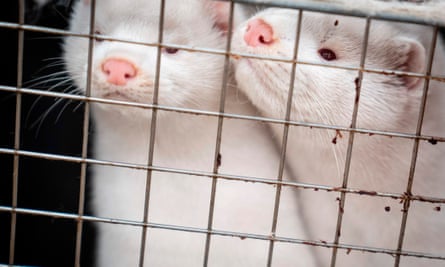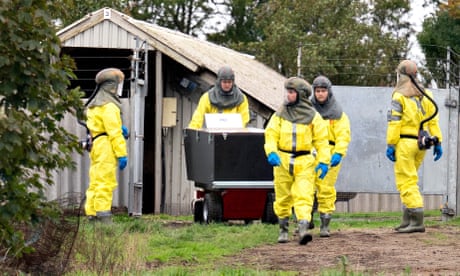
Elon Musk is the latest big shot to catch coronavirus after mocking it.
Cassandra Tassios
Billionaire tech entrepreneur Elon Musk is the latest COVID-19 cynic to catch the virus, and the internet has branded him with the embarrassing nickname ‘Space Karen’ as a result.
Mr Musk earned the moniker after he complained about, and attempted to discredit, one of the rapid coronavirus detection tests.
“Something extremely bogus is going on,” Mr Musk tweeted on Friday.
“Was tested for COVID four times today. Two tests came back negative, two tests came back positive. Same machine, same test, same nurse. Rapid antigen test from BD.”
Play Video
Elon Musk Casts Doubt on COVID-19 Testing After Receiving Positive and Negative Results
Musk took to Twitter on Thursday night to reveal that he might have COVID-19.
Dr Emma Bell, an academic who specialises in bioinformatics, jumped in to explain why the test might have been inconsistent.
“Rapid antigen tests trade sensitivity for speed,” Dr Bell tweeted.
“They return a result in less than 30 minutes, but can only detect COVID-19 when you’re absolutely riddled with it.
“What’s bogus is that Space Karen didn’t read up on the test before complaining to his millions of followers.”
Rapid antigen tests trade sensitivity for speed. They return a result in <30 minutes, but can only detect COVID-19 when you're absolutely riddled with it. What's bogus is that Space Karen didn't read up on the test before complaining to his millions of followers. pic.twitter.com/a1Snfpm03h
— Emma Bell PhD (@emmabell42) November 14, 2020
Mr Musk’s newly established alter-ego even received some hilarious, Karen-inspired art to help fans visualise him in all his ‘can-I-speak-to-the-manager’ glory.
Space Karen is trending.
Keep it alive.#SpaceKaren pic.twitter.com/imtHSaqSNs
— Dr. Mike 😷Wear a Mask😷 (@EmergMedDr) November 16, 2020
Due to coronavirus concerns, “Space Karen” was unable to attend the historic launch of his SpaceX rocket on Sunday (US time). It has taken four astronauts to the International Space Station.
Mr Musk doubled down on his COVID-19 scepticism by playing down his symptoms.
“My symptoms are that of a minor cold, which is no surprise, since a coronavirus is a type of cold,” he tweeted.
And after months of questioning the virus’ “extremely low” probability of death and touting conspiracy theories online, some are appreciating the irony of his infection.
But “Space Karen” isn’t the only celebrity in the ‘mocked-it-then-copped-it’ camp.
Donald Trump
Recovered coronavirus patient Donald Trump has been outspoken in his scepticism of SARS-CoV-2.0, which he often calls the “China virus”.
After initially claiming the virus was “under control” and would not affect Americans, the 74-year-old outgoing US President went on to tell citizens that masks were voluntary.
My Karen cartoon was a work in progress. Here it is finished. #TrumpMeltdown #Karen #Karenstrikesagain #Election2020 pic.twitter.com/R6VgUtLsrY
— Michael de Adder (@deAdder) November 18, 2020
“The CDC is advising the use of non-medical cloth face covering as an additional voluntary public health measure,” Mr Trump said in an April 3 speech at the White House, a few months before catching the virus.
“It’s voluntary. You don’t have to do it. They suggested for a period of time, but this is voluntary. I don’t think I’m going to be doing it.”
Related: What to wear to a coup: Kirstie Clements reviews Melania Trump’s FLOTUS wardrobe choices
On October 2, Mr Trump and first lady Melania tested positive for the virus, joining more than 43,000 US citizens who also tested positive on the same day.
Great reviews on our handling of Covid 19, sometimes referred to as the China Virus. Ventilators, Testing, Medical Supply Distribution, we made a lot of Governors look very good – And got no credit for so doing. Most importantly, we helped a lot of great people!
— Donald J. Trump (@realDonaldTrump) May 25, 2020
Doja Cat
Doja Cat, the artist behind the viral TikTok song, Say So, drew backlash in March for shaming coronavirus precautions and comparing it to the flu during an Instagram Live video.
“I’m gonna get corona and then I’m gonna get a Corona, cause I don’t give a f— about corona, b—-,” the rapper told her followers.
“It’s a flu. You just take some Mucinex and drink water and tea and sleep – that’s all you gotta do.
“Y’all are so scared of some damn corona. Y’all are so scared of corona that I need a Corona.”
In July, the 24-year-old revealed to British radio station, Capital XTRA, that she had contracted the virus.
“I got COVID,” she said.
“Honestly, I don’t know how this happens but I guess I ordered something off of Postmates, and I don’t know how I got it but I got it.
“I’m OK now. It was a four-day symptom freakout, but I’m fine now.”
Rudy Gobert
French professional basketballer Rudy Gobert made headlines early on in the pandemic for his blatant disregard for health and hygiene guidelines.
Gobert, who was later credited as being sports’ patient zero for the virus, was diagnosed after jokingly handling microphones at a media conference.
The public outrage and scrutiny was further exacerbated when the Utah Jazz player tested positive just days later.
“The media portrayed it like I caused the NBA to shut down,” Gobert told The Washington Post in July.
“Instead of saying that it’s a pandemic and Rudy Gobert tested positive. For a lot of people who don’t think further than what’s put in their faces, they really thought I brought the coronavirus to the United States.”
Video shows Rudy Gobert, an NBA player who reportedly tested positive for coronavirus, touching microphones with his hands after speaking with reporters on Monday https://t.co/ekxauQo8KV pic.twitter.com/pd7Q9vJkCz
— CBS News (@CBSNews) March 12, 2020







